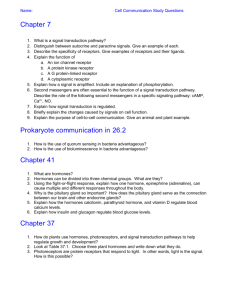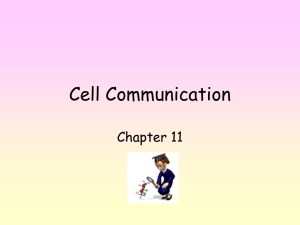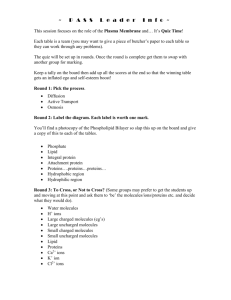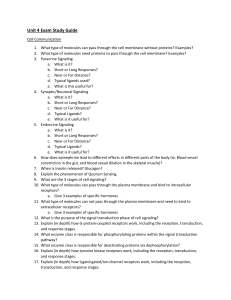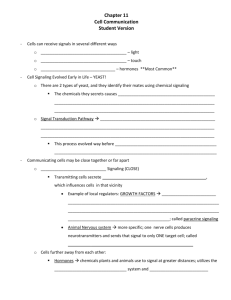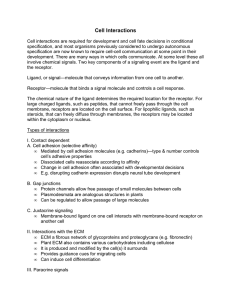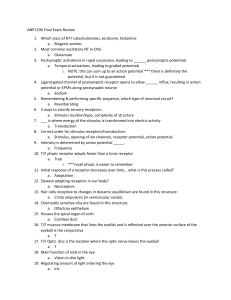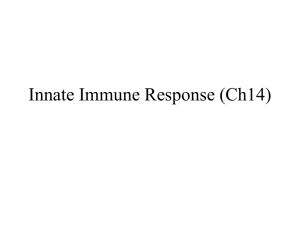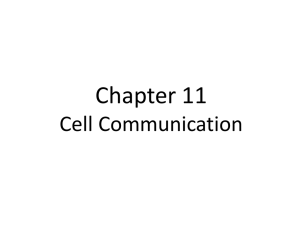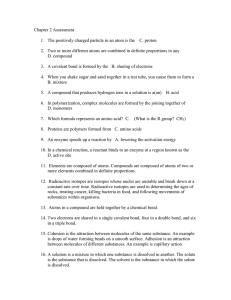Steps of Cell Signaling
advertisement
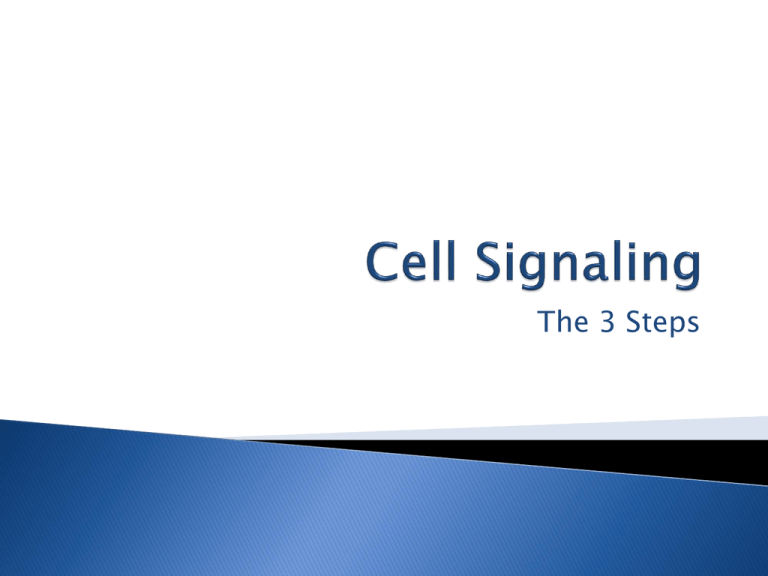
The 3 Steps Intracellular Receptors ◦ Proteins in the cytoplasm or in the nucleus ◦ Example: transcription factors Receptors in the Plasma Membrane ◦ Transmit information from extracellular environment to inside by changing shape or aggregating when bound by a ligand ◦ Examples: G-protein-linked-receptors (detect neurotransmitters, hormones, etc.), tyrosine kinases (catalyze transfer of phosphate groups), and ion channel receptors (gates for ions) Signal Transduction Pathways ◦ Signal is changed to a different form at each step – usually conformational change of protein Protein Phosphorylation and Dephosphorylation ◦ Adding a phosphate group to activate enzymes in the pathway, and removing them to deactivate them Small Molecules and Ions as Second Messengers ◦ Diffuse quickly through cytosol ◦ Examples: cAMP, Calcium ions Cytoplasmic and Nuclear Responses ◦ Enzyme activity, etc. Fine-Tuning of the Response ◦ Amplification of response by activating multiple copies of the next component in a pathway ◦ Scaffolding proteins facilitate signal transduction by holding several relay proteins close together ◦ When signal molecules leave their receptor, the receptor reverts to its inactive form… and so do the relay molecules ◦ http://www.youtube.com/watch?v=FkkK5lTmBYQ

